17 Historic Towns In Germany To Explore
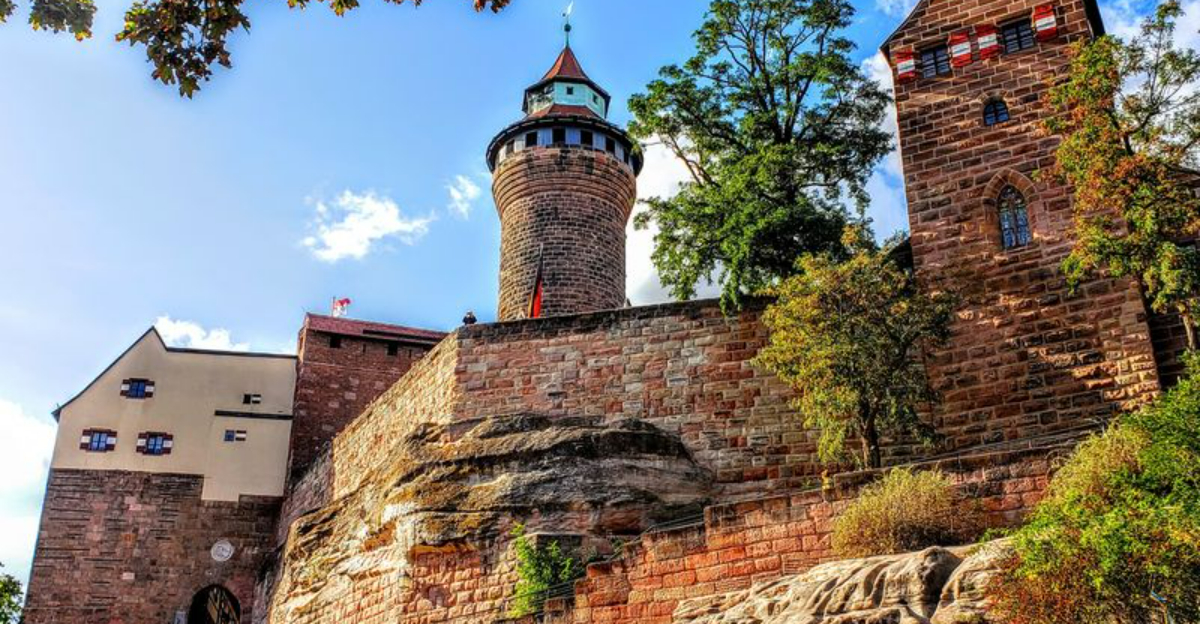
Germany’s landscape is dotted with charming historic towns that tell stories from medieval times to the Renaissance and beyond. These well-preserved gems offer cobblestone streets, half-timbered houses, and centuries-old traditions that transport visitors back in time.
If you’re planning a trip to Germany, these historic towns should be at the top of your must-visit list.
1. Rothenburg ob der Tauber
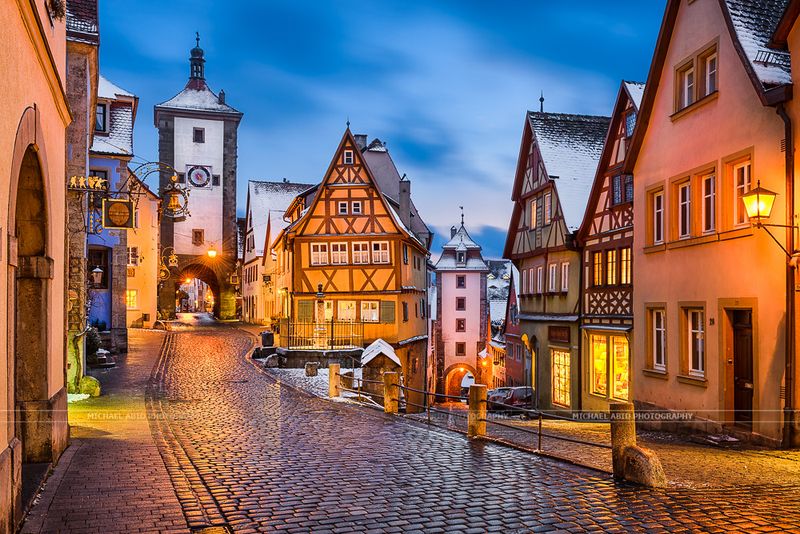
Walking through this medieval town feels like stepping into a fairy tale. The colorful half-timbered houses and cobblestone streets have remained largely unchanged since the 1500s. Don’t miss the Night Watchman’s Tour for entertaining stories about life in medieval times.
The town wall offers spectacular views of the surrounding countryside and the perfectly preserved architecture below. December transforms Rothenburg into a magical Christmas wonderland with its famous market that has inspired holiday traditions worldwide.
2. Heidelberg
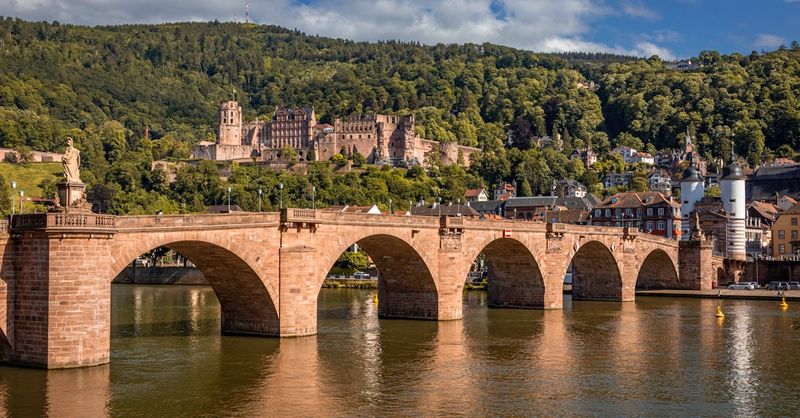
Perched dramatically above the Neckar River, Heidelberg Castle’s red sandstone ruins create one of Germany’s most romantic scenes. The town itself combines student energy with historic charm. Stroll across the Old Bridge with its distinctive twin towers for picture-perfect views.
The Philosophers’ Walk on the opposite bank provides the best vantage point to appreciate the castle and old town panorama. Home to Germany’s oldest university (founded 1386), Heidelberg has inspired poets, artists, and thinkers for centuries.
3. Bamberg
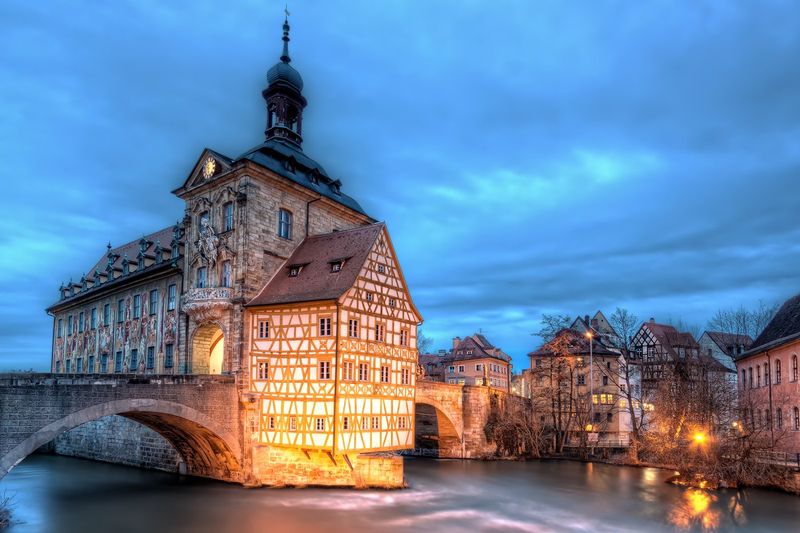
Built on seven hills like Rome, Bamberg survived WWII remarkably intact. Its entire old town is a UNESCO World Heritage site with over 2,000 listed historical buildings. The Old Town Hall sits impossibly on an artificial island in the middle of the river, accessible by bridges from both sides.
For beer lovers, Bamberg is heaven with nine breweries producing unique smoked beer called Rauchbier. If you visit the cathedral, look for the famous Bamberg Rider statue, a mysterious mounted figure whose identity remains debated after 800 years.
4. Quedlinburg
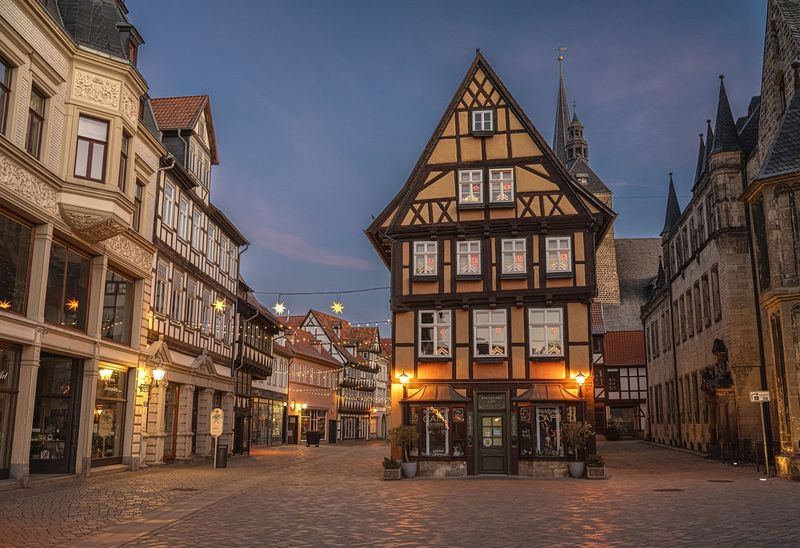
Hidden in the Harz Mountains, this town boasts over 1,300 half-timbered houses spanning eight centuries. Many visitors overlook Quedlinburg, making it a peaceful alternative to more touristy medieval towns.
The cobblestone streets wind uphill to a Romanesque cathedral and castle complex that once housed a powerful medieval abbey ruled by women. Each house tells its own story through intricate wood carvings and colorful facades.
Marvel at how the buildings lean at impossible angles yet have stood for hundreds of years through wars and weather.
5. Regensburg
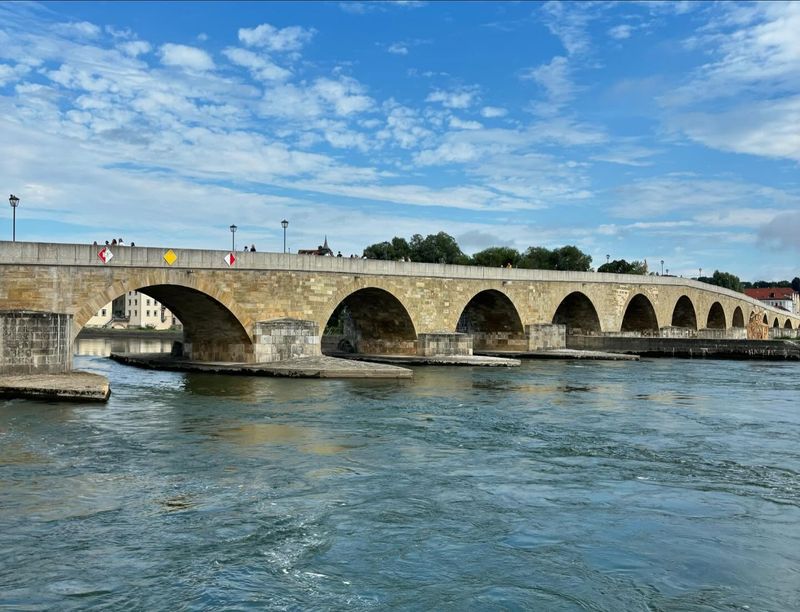
Along the Danube River sits one of Germany’s best-preserved medieval cities. The 12th-century Stone Bridge was an engineering marvel of its time and remains the oldest bridge in Germany still in use. Unlike many German cities, Regensburg escaped major bombing during WWII.
You’ll find 1,500 listed historic buildings including towers built by wealthy merchants to show off their status. Stop at the Historic Sausage Kitchen near the bridge, which has been serving customers since the 1300s, making it possibly the world’s oldest continuously open public restaurant.
6. Trier
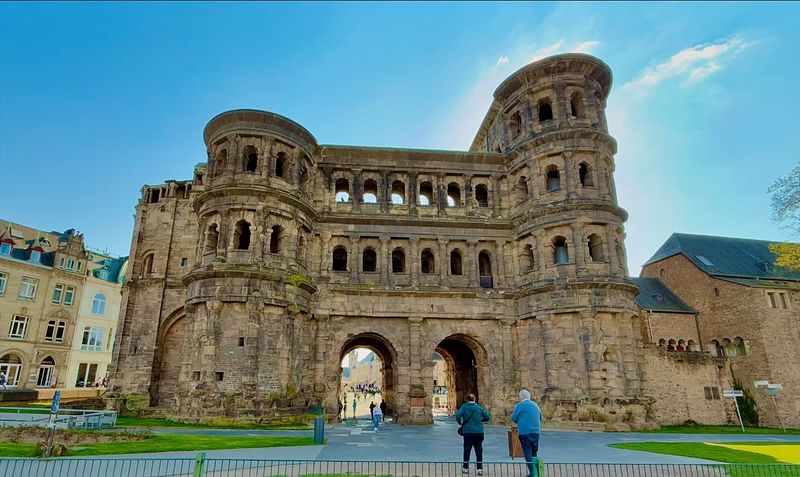
Founded by the Romans in 16 BC, Trier claims to be Germany’s oldest city. The massive black Porta Nigra gate still guards the city after nearly 2,000 years. You can explore remarkably preserved Roman baths, an amphitheater, and a basilica that served as an imperial throne room.
The birthplace of Karl Marx offers a fascinating museum in his childhood home for history buffs. Despite its ancient roots, Trier feels surprisingly lively with university students filling the cafés around the medieval main square with its Renaissance fountain.
7. Görlitz
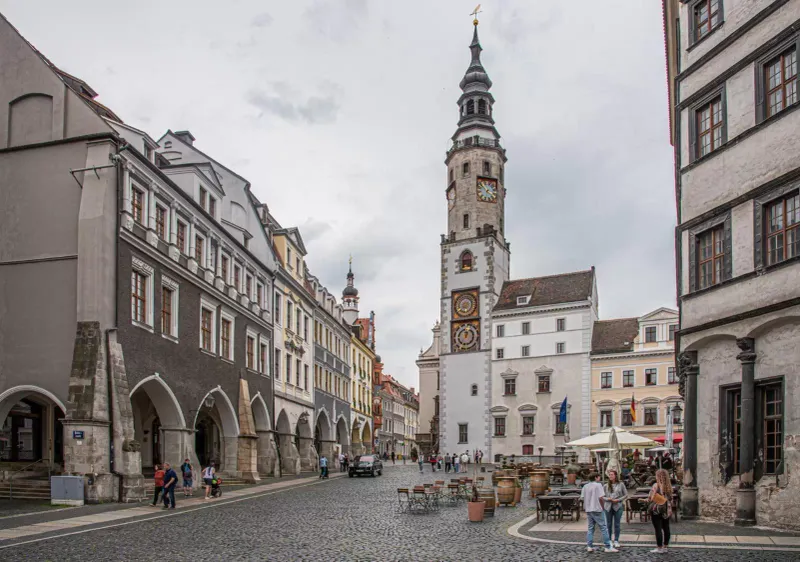
Sitting right on the Polish border, Görlitz has become a favorite filming location for Hollywood. Movies like The Grand Budapest Hotel and Inglourious Basterds used its unspoiled streets as backdrops. After WWII, the city was split in half, with the eastern part becoming Polish Zgorzelec.
Today, you can walk across a footbridge between two countries. The architectural styles span 500 years with hardly a modern building in sight. Lucky restoration came from a mysterious anonymous donor who gave the city one million euros annually for 20 years to restore its buildings.
8. Lübeck
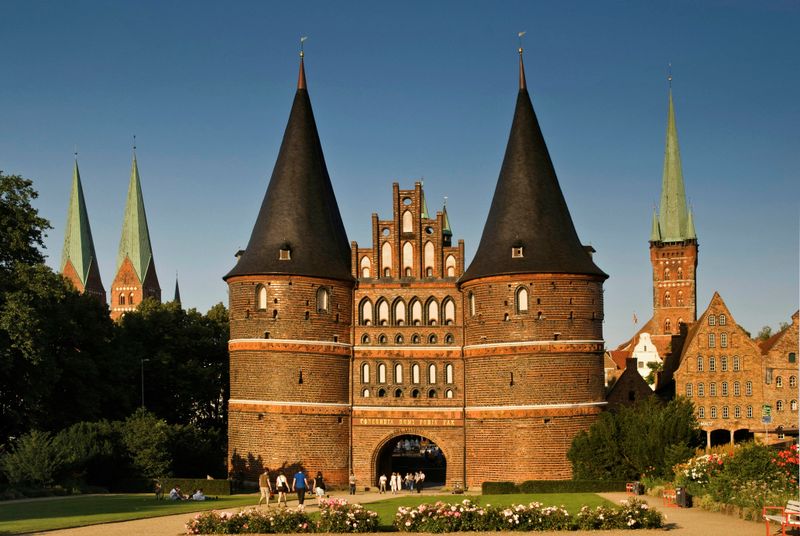
Known as the Queen of the Hanseatic League, Lübeck’s wealth from medieval trade is evident in its architecture. The entire island old town is a UNESCO site, entered through the iconic Holstentor gate. Famous for marzipan, the sweet almond paste was supposedly invented here during a famine.
The seven spires of the five main churches create a distinctive skyline visible from miles around. Thomas Mann’s novel Buddenbrooks immortalized the city’s merchant history, and you can visit his family home.
Don’t leave without trying the local specialty: Lübecker Rotspon, red wine imported from France and aged in local cellars.
9. Weimar
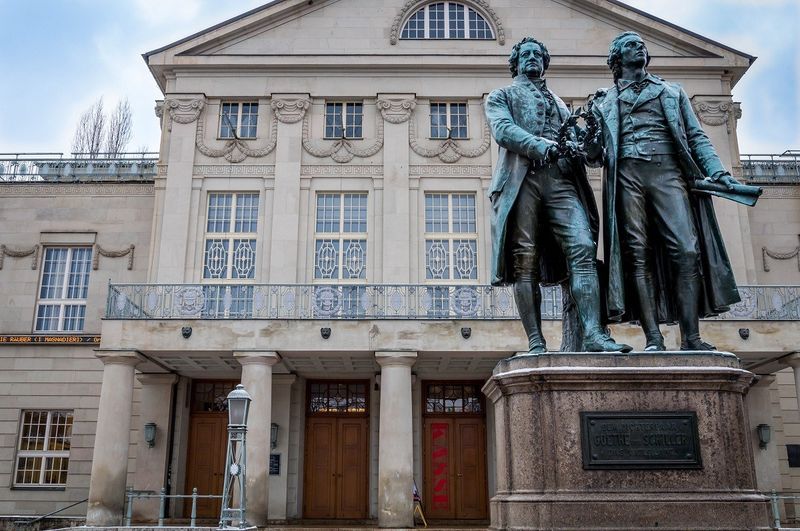
Small in size but enormous in cultural impact, Weimar was home to Germany’s greatest minds. Goethe and Schiller wrote their masterpieces here, while Bach composed and played in its churches. The Bauhaus movement was born in Weimar before spreading worldwide, revolutionizing architecture and design.
Despite its refined cultural heritage, the town also has a dark chapter—the Nazi concentration camp Buchenwald sits just outside the city limits. Wandering through Goethe’s home and garden offers insight into the genius behind Faust and the person who helped shape German identity.
10. Dinkelsbühl
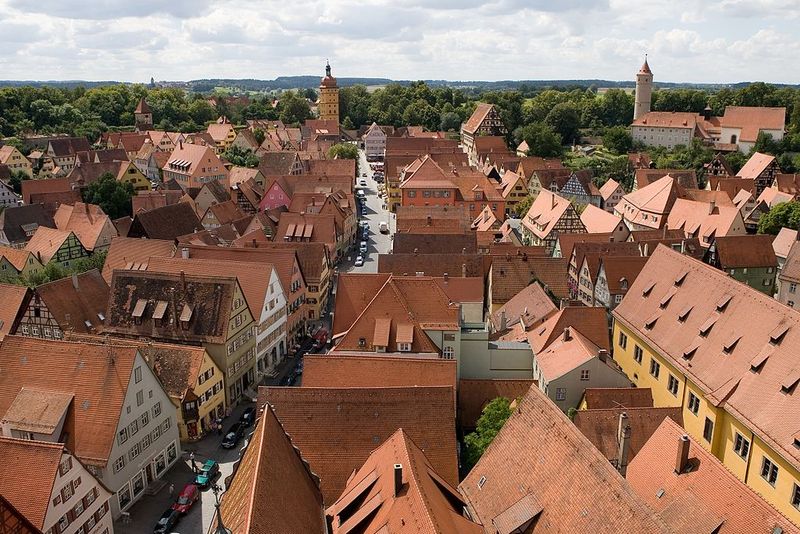
If you think Rothenburg is too crowded, head to Dinkelsbühl instead. This perfectly preserved medieval town sees fewer tourists but offers equally stunning architecture and atmosphere.
Every summer since 1897, the town celebrates the Children’s Festival (Kinderzeche) commemorating how children supposedly saved the town from destruction during the Thirty Years’ War. The complete town walls with their 16 towers and four gates still encircle the old town.
Climbing the Daniel Tower rewards you with breathtaking views of red rooftops and the surrounding countryside.
11. Meissen
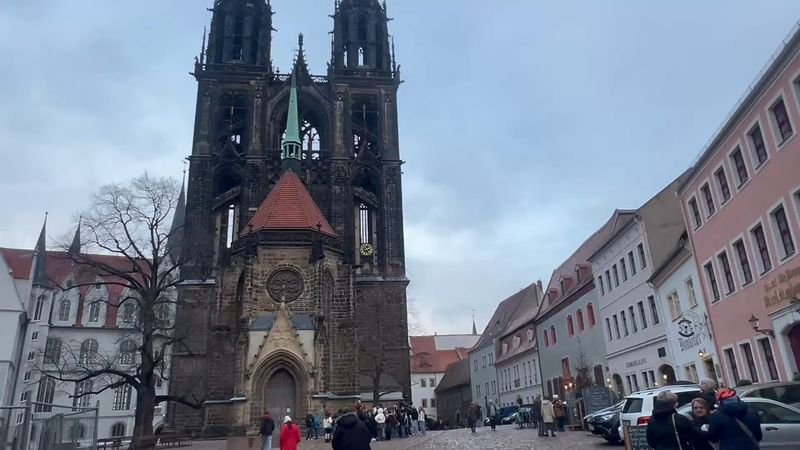
High above the Elbe River stands Albrechtsburg Castle, Europe’s oldest castle palace. Below it, the town of Meissen has been producing Europe’s first fine porcelain since 1710. You can visit the porcelain factory to watch master craftsmen hand-paint the famous blue onion pattern.
The Gothic cathedral next to the castle creates a dramatic skyline known as the “Cradle of Saxony.” Wine lovers should explore the terraced vineyards surrounding the town, which produce excellent but little-known wines from some of Europe’s northernmost vineyards.
12. Meersburg
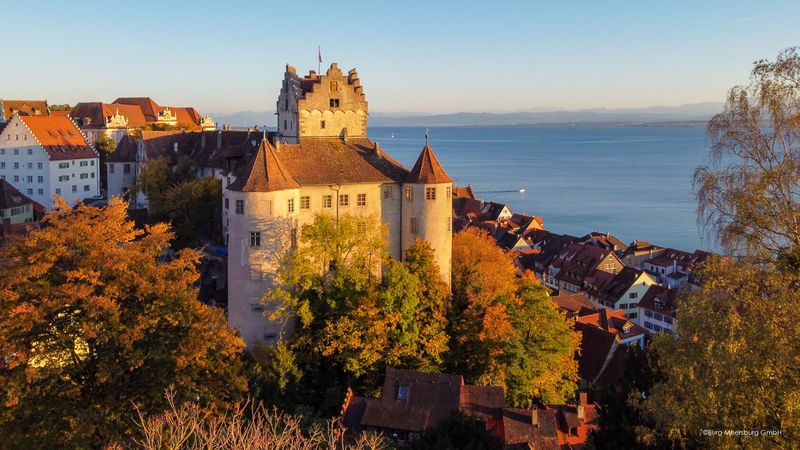
Overlooking Lake Constance, Meersburg actually has two castles: the medieval Old Castle dating to the 7th century and the Baroque New Castle from the 18th century. The town climbs steeply from the lakeshore up the hillside. Germany’s oldest poet, Annette von Droste-Hülshoff, spent her final years here, and you can visit her former residence.
From the promenade, ferries cross to the flower island of Mainau and the UNESCO World Heritage monastery island of Reichenau. Vineyards surround the town, producing excellent Pinot Noir wines that pair perfectly with views of the Alps across the lake.
13. Monschau
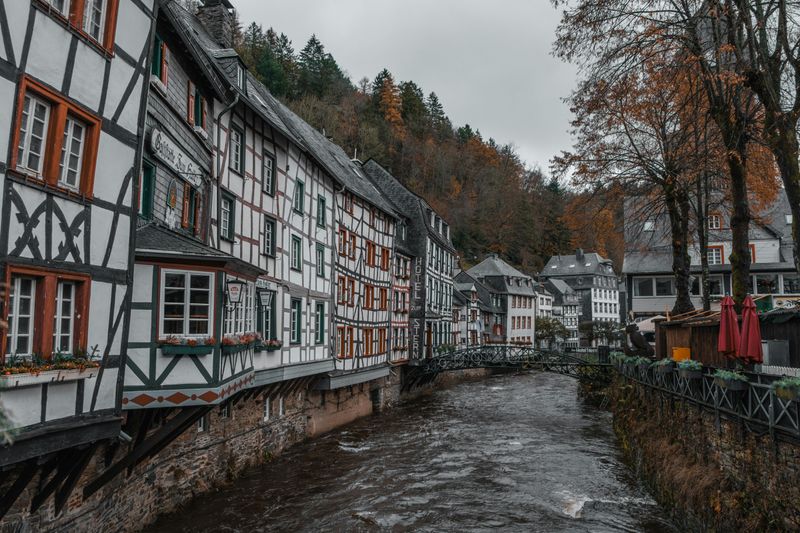
Tucked into a narrow valley in the Eifel Mountains near the Belgian border, Monschau looks frozen in the 18th century. The Rur River winds through town with half-timbered houses crowding its banks.
Once famous for cloth production, the town’s Red House museum showcases the luxury that wool brought to its owners with a spectacular Rococo interior. During Advent, the Christmas market transforms the medieval marketplace into a winter wonderland.
Try the local Monschauer Dütchen, a sweet pastry that’s been baked here for centuries using a closely guarded recipe.
14. Wismar
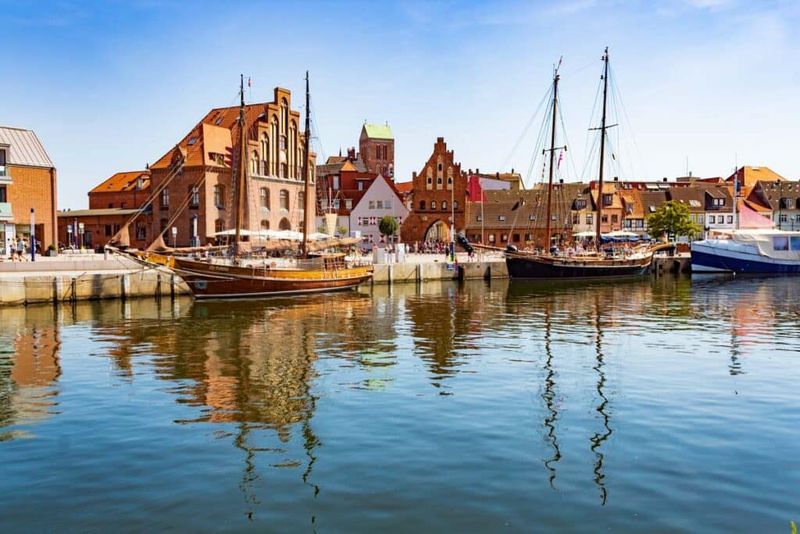
Once one of the most powerful ports in the Hanseatic League, Wismar’s historic center survived WWII relatively intact. The massive Brick Gothic churches demonstrate the wealth maritime trade brought to the city. For nearly 150 years, Wismar belonged to Sweden, and Swedish influences remain visible in some buildings.
The rectangular market square is one of the largest in northern Germany, surrounded by elegant gabled houses. Harbor tours take you past the last remaining Swedish defensive sea bastion and give you the same approach to the city that medieval traders would have seen.
15. Celle
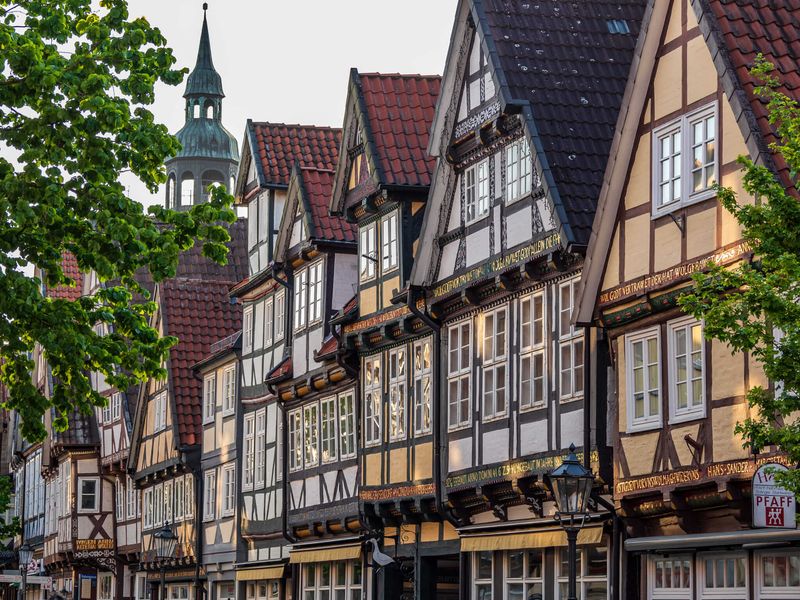
Over 500 half-timbered houses make Celle one of the most important timber-frame towns in Germany. Many facades feature intricate carvings telling stories or displaying the wealth of their original owners.
The Renaissance castle served as home to the dukes of Brunswick-Lüneburg and contains the oldest Baroque theater in Germany still in operation. Behind many historic facades, you’ll find modern shops and cafes that keep the old town lively.
Look for the unique “traufenhaus” building style where houses face the street with their narrow sides to fit more buildings along prestigious streets.
16. Nuremberg
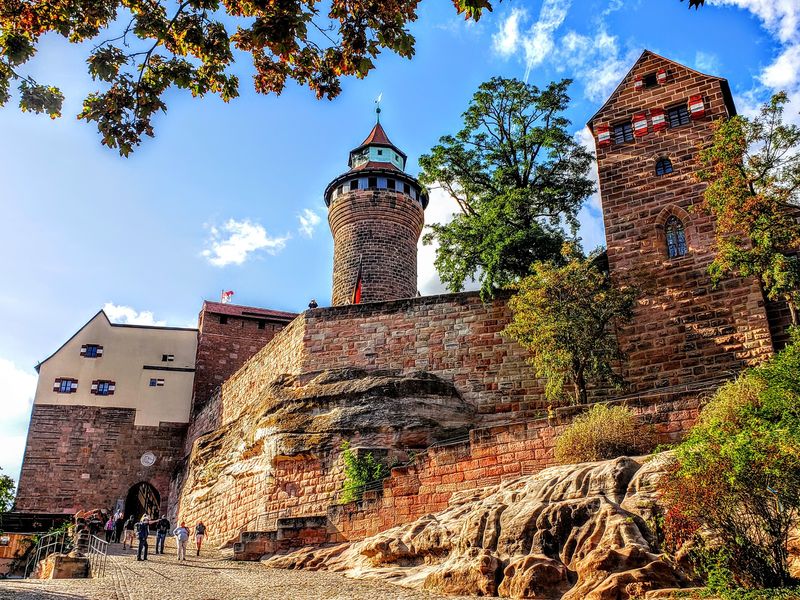
Though heavily damaged in WWII, Nuremberg’s old town has been meticulously reconstructed. The imposing Imperial Castle watches over the city from its sandstone hill perch. Famous for its Christmas market, gingerbread, and tiny bratwurst, Nuremberg’s culinary traditions date back centuries.
Below the streets lies a fascinating network of rock-cut cellars originally used for beer storage and as air raid shelters during the war. While acknowledging its dark Nazi rally past, today’s Nuremberg balances remembrance with celebration of its 950+ years of imperial history and its role in German art and printing.
17. Goslar
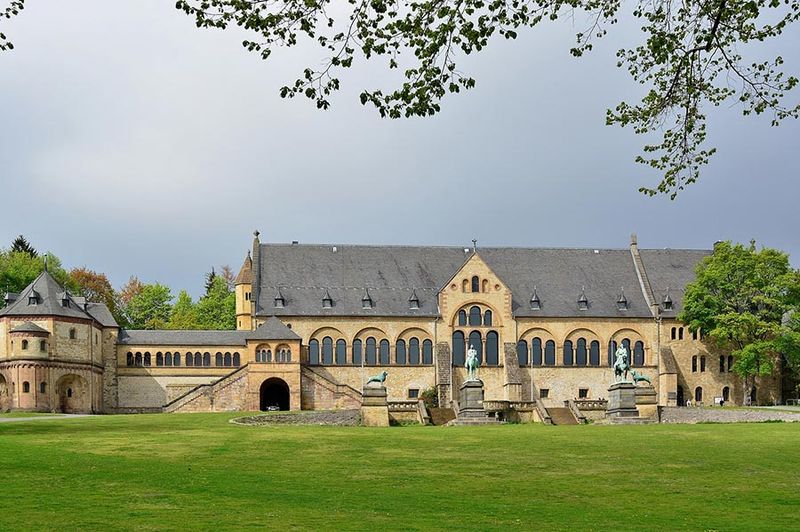
Mining silver from the nearby Rammelsberg mine made Goslar an imperial residence in medieval times. The impressive Imperial Palace (Kaiserpfalz) stands as testimony to its past importance. Over 1,500 half-timbered houses survived the centuries intact, many adorned with intricate wood carvings.
Don’t miss the Glockenspiel at the market square, where figurines tell the history of mining three times daily. As a special treat, visit the ancient mine itself—a UNESCO World Heritage site with tours showing 1,000 years of mining technology development.
